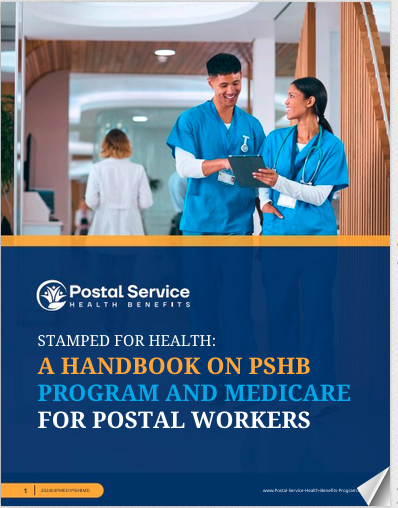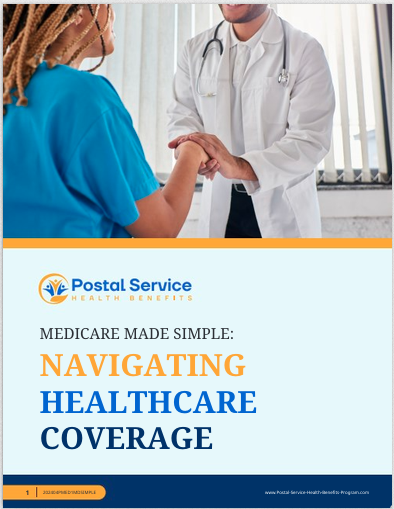Key Takeaways:
- USPS employees and retirees will see significant changes in their health coverage due to Medicare mandates and the introduction of the Postal Service Health Benefits (PSHB) program.
- Understanding Medicare Part B enrollment requirements and how they affect your USPS health benefits is essential for making informed healthcare decisions.
Medicare Mandates, Premium Changes, and USPS Health Plans: What It All Means for You
As a U.S. Postal Service (USPS) worker or retiree, navigating health insurance can feel like an ever-changing landscape. With new mandates, premium changes, and the introduction of the Postal Service Health Benefits (PSHB) program, it’s important to stay informed. These changes will significantly affect the way you manage your healthcare, particularly as Medicare Part B enrollment becomes a requirement for many under these new rules. This article will help clarify what these shifts mean for you and how to prepare.
Medicare and USPS: Understanding the Basics
The intersection of Medicare and USPS health plans is evolving, especially with the introduction of the Postal Service Health Benefits (PSHB) program, which is designed specifically for USPS employees and retirees. As a result, many who are already enrolled or planning to enroll in Medicare should understand the impact these mandates have on their current and future health coverage.
Medicare is a federal health insurance program designed primarily for people aged 65 and older. It consists of multiple parts, with Part A covering hospital insurance and Part B providing medical insurance. Historically, USPS employees and retirees have had the option of enrolling in Medicare but weren’t always required to do so. However, that’s changing under the new mandates.
The newly established Postal Service Health Benefits (PSHB) program will now operate separately from the Federal Employees Health Benefits (FEHB) program, although they share many similarities. PSHB will affect many USPS retirees and those nearing retirement, as Medicare Part B enrollment will become a crucial part of their healthcare plan.
What Are the Medicare Mandates?
Under new federal mandates, many USPS retirees who turn 65 or older will be required to enroll in Medicare Part B to continue receiving their health coverage through PSHB. This change is significant because, in the past, Medicare enrollment was optional for some, and USPS workers relied primarily on FEHB.
The Medicare mandate means that if you’re a USPS retiree and fail to sign up for Medicare Part B when you’re eligible, you may risk losing certain benefits from the Postal Service Health Benefits program. Medicare Part B, which covers outpatient care, preventive services, and durable medical equipment, will complement the PSHB program by reducing out-of-pocket costs for these services.
One of the key reasons for this mandate is to align USPS retiree healthcare costs more efficiently with federal health policy changes. As Medicare will now play a more active role in covering medical expenses for retirees, the USPS can reduce its overall spending on healthcare.
Premium Changes: What to Expect
With the changes brought by Medicare mandates and the PSHB program, premiums will likely shift for many USPS retirees. While specific pricing details are not available, retirees should expect adjustments in their monthly premiums, particularly if they are required to enroll in Medicare Part B. The cost of Medicare Part B depends on your income, and some retirees may need to factor this additional expense into their healthcare budgeting.
Currently, retirees under the Federal Employees Health Benefits (FEHB) program generally enjoy the benefit of their premium costs being shared by the government. With the switch to the PSHB program, those cost-sharing arrangements will still exist, but the integration of Medicare Part B is expected to reduce out-of-pocket expenses for certain services.
In other words, although there will be added costs related to Medicare Part B premiums, these may be offset by savings through the combined coverage of both Medicare and PSHB. Be sure to plan your finances accordingly and stay informed about the premium changes as they roll out.
How the Postal Service Health Benefits (PSHB) Program Affects You
The Postal Service Health Benefits program was created as part of the 2022 Postal Service Reform Act, which aimed to address the financial challenges facing the USPS. One of the major provisions of this law is the establishment of a separate health benefits system for USPS employees and retirees, distinct from the Federal Employees Health Benefits (FEHB) program.
If you are a current USPS employee or retiree, here’s how PSHB will impact you:
-
For Retirees: If you’re retired and eligible for Medicare, you will be required to enroll in Medicare Part B to continue your coverage under PSHB. This means that you will have two primary forms of health insurance: Medicare (Parts A and B) and PSHB.
-
For Employees Nearing Retirement: Employees nearing retirement age will need to plan for the Medicare Part B requirement. It’s essential to sign up during your initial enrollment period to avoid penalties and ensure seamless coverage.
-
For Current Employees: Current USPS employees under the age of 65 won’t experience immediate changes. However, it’s important to understand that once you become eligible for Medicare, you will need to coordinate your USPS health benefits with Medicare to maximize your coverage.
Overall, the transition to PSHB is expected to simplify the health insurance process for USPS employees and retirees, while also reducing costs over time. However, it requires careful planning and awareness of key deadlines, particularly when it comes to enrolling in Medicare Part B.
Why You Shouldn’t Delay Medicare Enrollment
If you’re a USPS retiree or nearing retirement age, enrolling in Medicare Part B is crucial under the new mandates. Failure to enroll during your initial enrollment period could result in late enrollment penalties, which will permanently increase your monthly premiums. These penalties increase by 10% for each year you delay signing up for Medicare Part B after becoming eligible, which can add up over time.
Additionally, delaying enrollment could result in gaps in your health coverage. Without Medicare Part B, certain medical services such as outpatient care and preventive services may not be covered under the PSHB program, leading to higher out-of-pocket costs. To avoid these complications, it’s best to enroll in Medicare Part B as soon as you become eligible, typically at age 65.
Navigating the Transition: Key Steps for USPS Retirees
As a USPS retiree or an employee nearing retirement, here are some important steps to take to ensure a smooth transition into the Postal Service Health Benefits (PSHB) program and Medicare Part B:
-
Understand Your Enrollment Period: If you’re approaching 65, your initial Medicare enrollment period begins three months before the month you turn 65 and lasts for seven months. This is the best time to sign up for Medicare Part B without facing any penalties.
-
Coordinate with PSHB: Make sure to align your Medicare enrollment with your transition to PSHB. Reach out to your benefits administrator or a licensed insurance agent for detailed guidance.
-
Review Your Benefits: Familiarize yourself with the specific benefits offered by the PSHB program and how they work in tandem with Medicare. Knowing the details will help you make the most of your coverage and avoid unnecessary expenses.
-
Plan for Premiums: Keep in mind that while Medicare Part B premiums will be an additional cost, the overall savings on medical expenses can help offset this. Plan your budget accordingly.
-
Stay Informed: Health plans can change, so it’s important to stay updated on any modifications to the PSHB program, especially as the transition rolls out fully over the next few years.
Changes You Need to Know About USPS Health Plans
With the rollout of the Postal Service Health Benefits program, all USPS employees and retirees will be part of a distinct health benefits system. If you are currently covered under FEHB, your health plan will transition into PSHB. This program aims to offer tailored health coverage to USPS employees while integrating Medicare benefits for retirees, potentially lowering long-term costs.
For retirees, Medicare Part B enrollment will be a critical factor in maintaining access to the full scope of health benefits under PSHB. Without it, gaps in coverage or increased out-of-pocket costs could arise, making timely enrollment essential.
Navigating the Future of USPS Health Plans
In the coming years, USPS employees and retirees will need to adapt to the changes in health benefits brought by the Postal Service Health Benefits (PSHB) program and Medicare mandates. While these changes may seem complex, they are designed to streamline healthcare coverage for USPS workers and retirees, ensuring that both Medicare and USPS health plans work together to provide comprehensive care.
By staying informed and planning ahead, you can make the transition smoother and avoid unexpected costs or coverage gaps. Take the time to review your benefits, sign up for Medicare when eligible, and consult a licensed insurance agent if you have any questions about your options.







